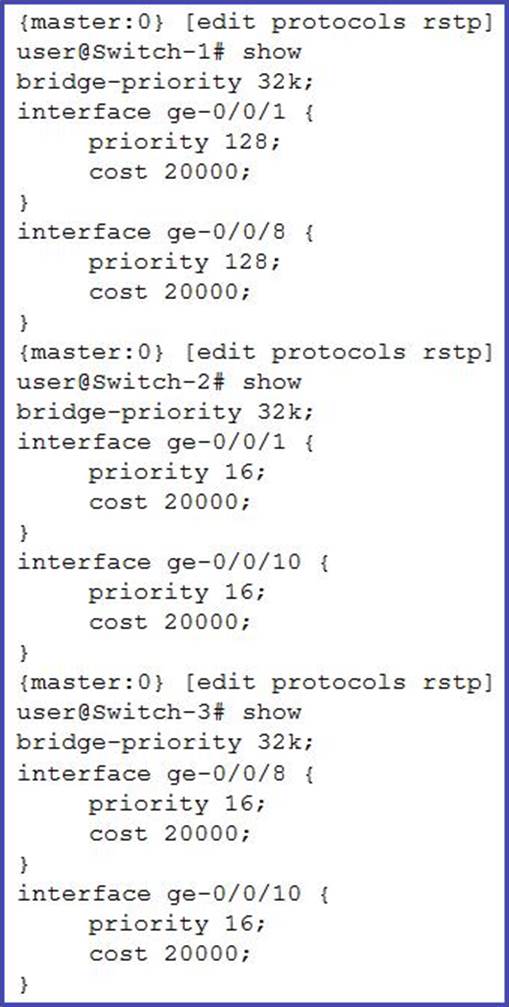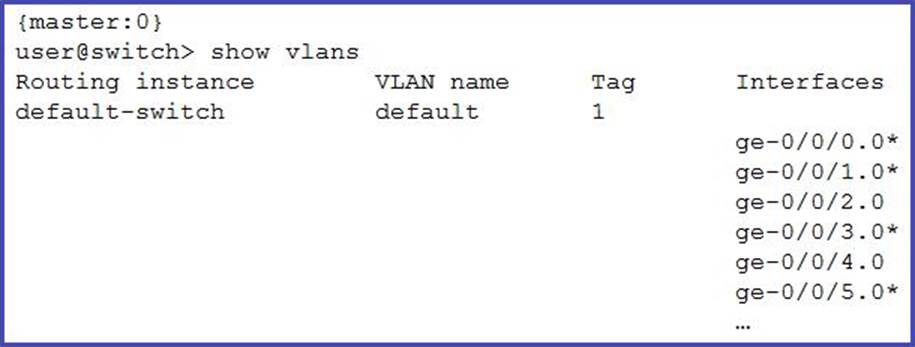Juniper JN0-349 Enterprise Routing and Switching, Specialist (JNCIS-ENT) Online Training
Juniper JN0-349 Online Training
The questions for JN0-349 were last updated at Dec 10,2025.
- Exam Code: JN0-349
- Exam Name: Enterprise Routing and Switching, Specialist (JNCIS-ENT)
- Certification Provider: Juniper
- Latest update: Dec 10,2025
What are two Layer 2 firewall filter types? (Choose two.)
- A . port-based
- B . packet-based
- C . flow-based
- D . VLAN-based
When electing a DIS in an IS-IS network, what is used to break a priority tie?
- A . highest router ID
- B . highest MAC address
- C . lowest MAC address
- D . lowest router ID
B
Explanation:
https://www.juniper.net/documentation/en_US/junos/topics/concept/routing-protocol-is-is-security-designated-router-understanding.html
Which OSPF area type receives only the default route from the backbone?
- A . transmit area
- B . totally stubby area
- C . not so stubby area
- D . stub area
Click the Exhibit button.

You are responsible for managing a Layer 2 network using RSTP for loop prevention. You recently committed the configurations shown in the exhibit. Unfortunately, Switch-2 became the root bridge and you must ensure that Switch-1 becomes the root bridge, when available, for this RSTP topology.
Referring to the exhibit, which configuration change should be performed?
- A . Configure the ge-0/0/1 and ge-0/0/8 interfaces on Switch-1 to have a priority of 255.
- B . Configure the system MAC on Switch-1 to be higher than the other two switches.
- C . Configure the bridge-priority on Switch-1 as 4k.
- D . Configure the ge-0/0/1 and ge-0/0/8 interfaces on Switch-1 to have a cost of 0.
You have an IBGP neighbor sending you routes. You need to apply a policy so it only evaluates routes being learned from this specific neighbor.
In this scenario, which statement is correct about applying the policy?
- A . The policy should be applied as an export policy to the BGP group level.
- B . The policy should be applied as an import policy to the BGP group level.
- C . The policy should be applied as an export policy to the BGP neighbor level.
- D . The policy should be applied as an import policy to the BGP neighbor level.
Click the Exhibit button.

Referring to the exhibit, what does the asterisk (*) following the ge-0/0/5.0 interface indicate?
- A . It indicates the interface is not active.
- B . It indicates the interface is a trunk port.
- C . It indicates the interface is an access port.
- D . It indicates the interface is active.
Click the Exhibit button.
You are implementing the network shown in the exhibit. You must ensure that all users can communicate with each other.
What are three steps that should be taken in this scenario? (Choose three.)
- A . You must specify the appropriate Layer 3 IRB interface under each VLAN.
- B . You must define all ports as trunk ports and include all VLANs as members.
- C . You must define all ports as access ports and include the appropriate VLAN as a member.
- D . You must configure a single logical IRB interface with an IP address for each of the three networks.
- E . You must create a unique logical IRB interface for each network and assign an IP address within the appropriate network.
Which two statements about Martian addresses are correct? (Choose two.)
- A . Martian addresses require a route prefix match type.
- B . Martian addresses are not installed in the routing table by default.
- C . Martian addresses can only be applied to the inet.0 routing table.
- D . Martian addresses are installed in the routing table by default.
You are asked to configure filter-based forwarding (FBF) to forward traffic sourced from a specific subnet to a webserver.
In this scenario, which mechanism is used to add interface routes to the forwarding routing instance used in FBF?
- A . generated routes
- B . RIB groups
- C . forwarding policy
- D . routing policy
What are two interarea OSPF LSA types? (Choose two.)
- A . Type 1 router LSAs
- B . Type 2 network LSAs
- C . Type 3 summary LSAs
- D . Type 4 ASBR summary LSAs
Latest JN0-349 Dumps Valid Version with 92 Q&As
Latest And Valid Q&A | Instant Download | Once Fail, Full Refund

